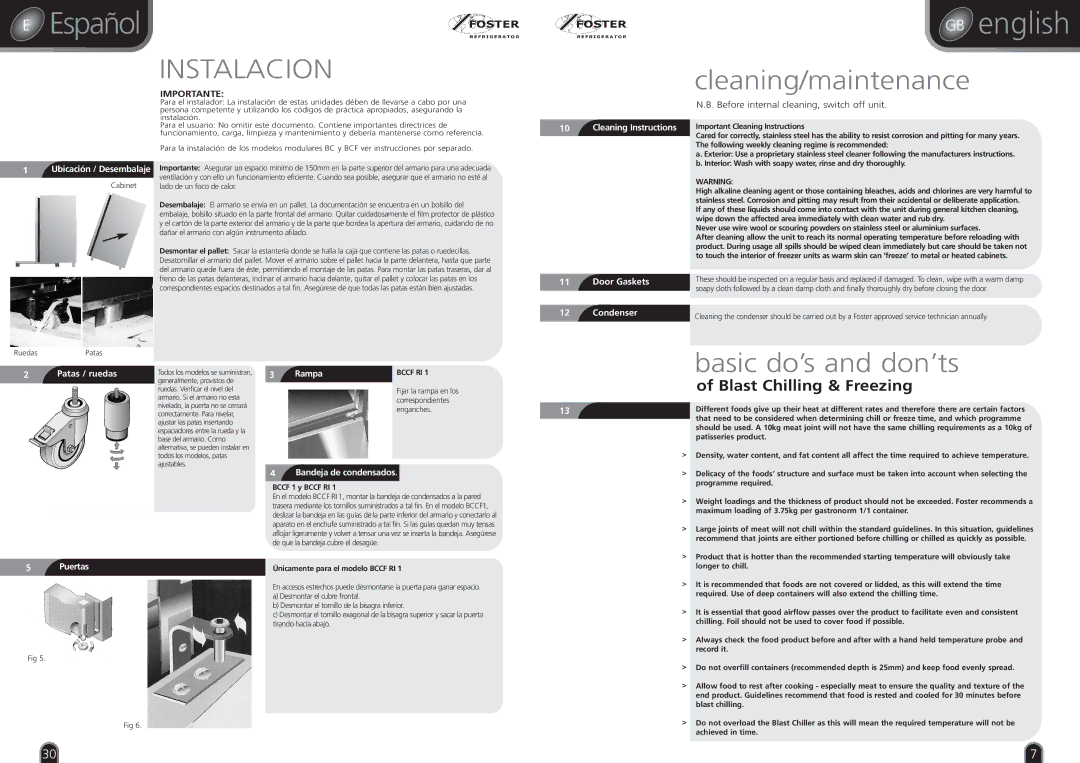BC11, BCF51, BC51, BCCF 1, BCF36 specifications
The Foster RBC20, BC36, BCCF RI 1, BCF11, and BC21 are a range of advanced engineering solutions designed to enhance industrial and commercial functionalities. These models are known for their innovative technologies and robust characteristics, serving various applications across multiple sectors.The RBC20 is particularly notable for its compact size yet powerful capabilities. It offers an impressive output and is equipped with energy-efficient technologies that reduce consumption without compromising performance. This makes it an ideal choice for environments where space is constrained, yet efficiency is paramount.
The BC36 model sets itself apart with its high-capacity features and durability. Engineered to withstand rigorous conditions, the BC36 is equipped with advanced materials that allow it to resist wear and tear, extending its operational lifespan. The incorporation of smart sensors provides real-time monitoring, enabling predictive maintenance that minimizes downtime.
Moving on to the BCCF RI 1, this unit specializes in fluid management systems. Its precision-engineered components ensure optimal control over fluid dynamics, making it indispensable in industrial applications where accuracy is critical. The BCCF RI 1 uses cutting-edge technology to integrate seamlessly into existing systems, offering versatility without the need for extensive modifications.
The BCF11 is recognized for its robust performance in high-stress environments. It combines strength with innovative design, featuring enhanced cooling mechanisms that prevent overheating during peak usage. The BCF11 is also characterized by user-friendly interfaces, making it easily operable even in complex applications.
Lastly, the BC21 model rounds out this impressive lineup with its focus on sustainability. The BC21 integrates eco-friendly technologies that significantly reduce carbon footprints while maintaining high efficiency. Its design promotes recyclability, aligning with global initiatives towards environmentally conscious engineering solutions.
In summary, the Foster RBC20, BC36, BCCF RI 1, BCF11, and BC21 are exemplary products, each offering unique features and benefits. From compact efficiency to strong durability, fluid management precision, robust performance, and sustainable practices, these models reflect Foster’s commitment to innovation and quality in engineering. Their adoption across various industries showcases their versatility and effectiveness in meeting modern engineering challenges.

